How to Get Authentic French Style in Your Home
As an interior designer born and bred in France, I have quite often been contacted by potential clients who want me to create a French style for their home. At first, I was dumbfounded. I never knew that “French style” existed, and I certainly didn’t know what people had in mind when they referred to it. I quickly learned that in most cases it meant lots of whitewashed pieces, some antique-looking items, many candles and hurricane lanterns, with the occasional glitzy crystal chandelier, linen towels, cute white lace and silver trays.
It’s a look that has become known as Shabby Chic or French Provincial, and although I can see some similarities in French homes, none of this looks truly French to me. Which prompts the question: What is French style? Let’s explore together some of the authentic essentials of a French-style home.
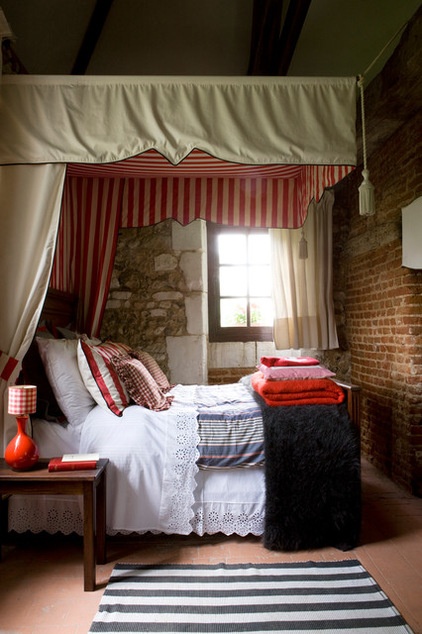
Every region in France has its own style and identity, with different building and decorative materials and colors (and regulations). And though any product can be accessed year-round anywhere in the country, there is still a very distinct sense of identity within a region, along with a sense of belonging and culture that can be hard to shake.
That being said, when you look closely enough, some common points are evident in the various styles seen in France, although they may not be what you expect.
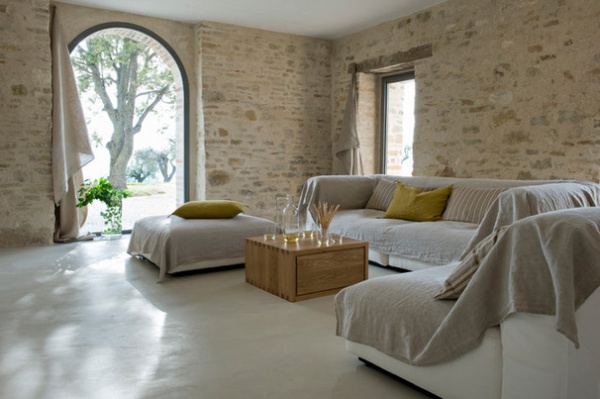
Myth 1: It’s all about the excess. If you think of Versailles as being the epitome of French style, you are mistaken. That might have been the case during the reign of Louis XIV, an era of extreme spending and royal debauchery, but the excesses of the monarchs led to their downfall.
Reality: Moderation is key. Moderation is at the center of French style, whether in the way we decorate our homes or the way we dress.
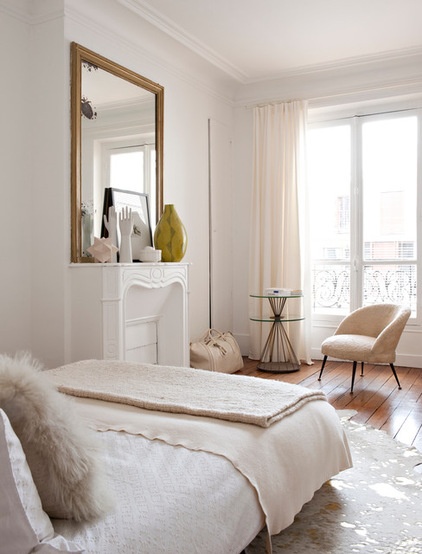
Think deliberate design that aims to be special but in a subtle, discreet way. It must look effortless.
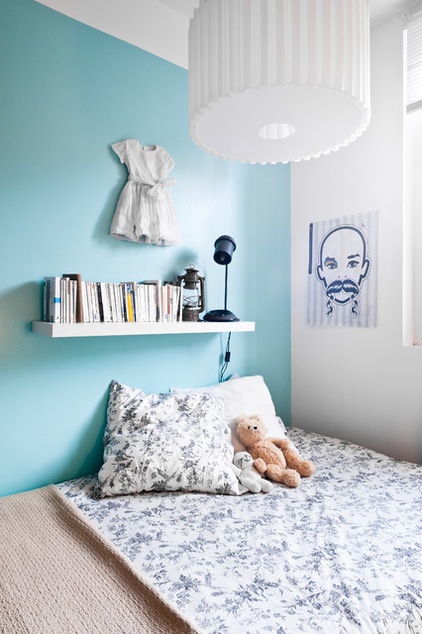
Even in children’s bedrooms, typical French style keeps things minimal: a simple color palette and a few carefully curated accessories that make for a clean-looking space that’s easily changed as the child grows.
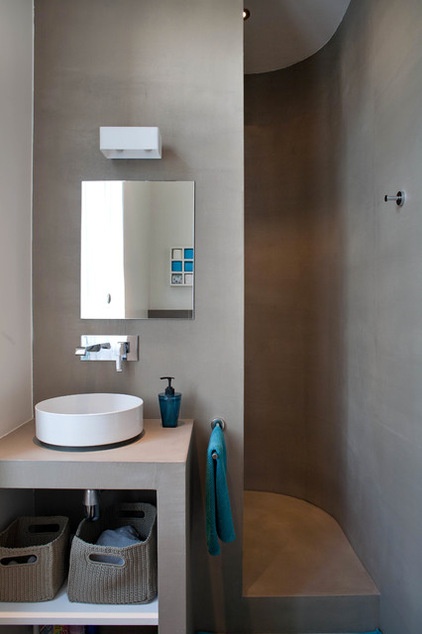
Myth 2: French style is about luxury. There are exceptions, but in general we tend to choose high-end products that don’t look expensive. We would opt for antique stone, prewashed linen and weathered, quality wood over glitzy or shiny materials like marble, travertine, polished mahogany, gold brocade or fine silk. And we have no problem decorating with secondhand or inexpensive items, as long as they feel right for the space.
Reality: It’s about harmony.
To most French people, ostentatious finishes are vulgar and tasteless, while elegance and beauty lie in restraint and harmony. This doesn’t mean we don’t like quirkiness or luxury; we just don’t like when items or materials scream, “Look at me! Look at me!” It doesn’t matter if it’s expensive; it is perceived as tacky. We tend to like good design and items that are efficient, practical, innovative and beautiful. This is because French homes tend to be on the small side. There isn’t much space to waste on unnecessary items.
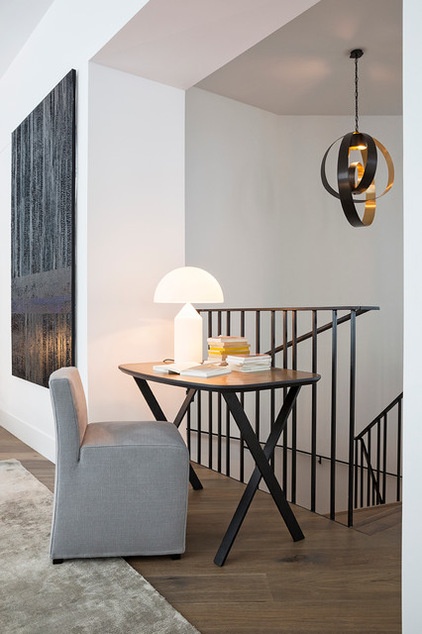
Everything must play a role or be gorgeous, and preferably both. The work of French designer Philippe Starck is a great testament to this, as is the work of the French architect Jean Prouvé. Balance is also fundamental. We might add an accent of shimmer via a brass light fitting, but this will be offset by the rest of the decor.
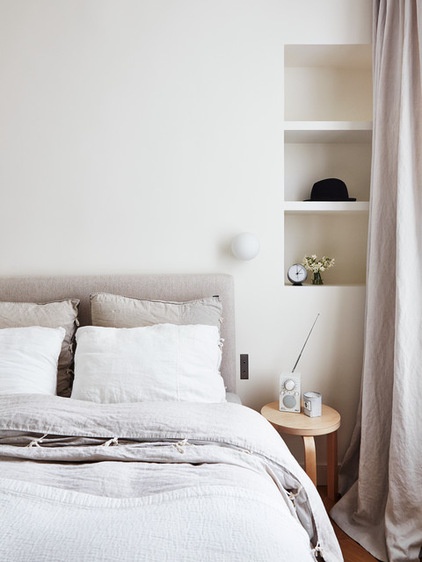
The materials we use are extremely important, with a strong focus on quality and authenticity: stone, terra cotta, wood, plaster, wool, iron, steel. Linen (antique, new, crisp or prewashed) is probably our favorite fabric because of its understated luxury. It’s soft but with irregularities; it creases, shrinks and expands. It’s never perfect, but it feels naturally at home in any setting.
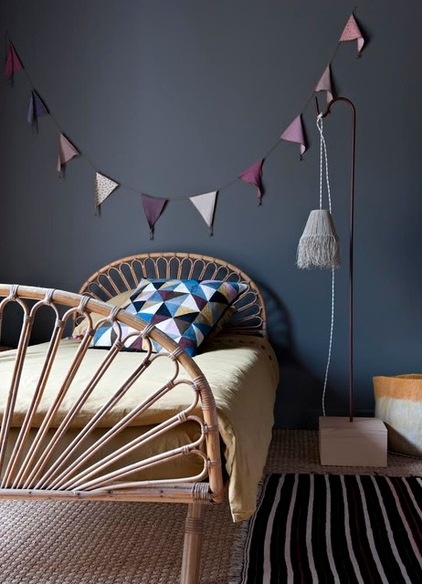
Myth 3: French people live in all-white homes. White textiles, white housewares, whitewashed furniture, lime-washed floors, white walls — for some reason, many people seem to think that French homes are a temple to white! Yes, white is widely used in France and is the standard building color (not beige), but white can also often be perceived as cold and impersonal, and French people are not afraid to mix it up.
Reality: We love neutrals …
In terms of colors, the French palette follows the same principle of subtlety and revolves mainly around neutrals — beige, white, gray, black, light blue, brown, taupe and sage are the basis of most French interiors. Patterns are usually quite discreet, and more often than not come from architectural or structural details, as opposed to housewares and textiles.
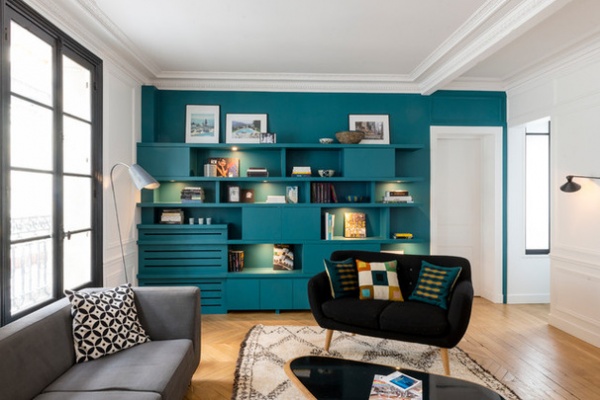
… but we don’t shy away from color, either. When using color, the French usually embrace bold, vibrant hues that will make a statement. However, we keep it simple by using no more than two colors (or several colors of the same family) in a room.
Because our homes tend to be small, we often use color as a way to maximize our space: to define zones in a small one-room apartment or to reduce clutter and create harmony. This photo is a great example: The same paint has been applied to the wall and wall cabinetry. As a result, the joinery blends into the wall and delivers a more minimalist result.
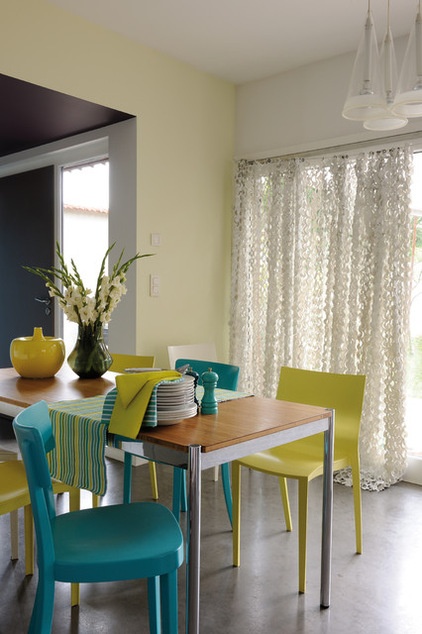
Some of the most popular accent colors are peacock blue, lime green, hot pink, terra-cotta orange, mustard yellow and red, but keep in mind that these can vary greatly from one region to another.
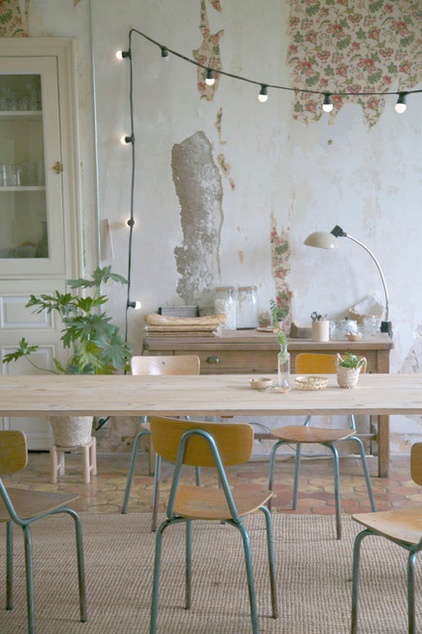
Myth 4: It’s traditional and ordered. If you think opulent decor, large pieces of furniture, clean, straight lines, perfect symmetry, spotless finishes and a tidy household are all typically French, you probably haven’t visited many French homes. In Paris, the average-sized apartment for a family of four is around 645 square feet (60 square meters). As a result, most rooms are multifunctional and we use compact, if not foldable or stackable, furniture where possible. Living in old buildings means accepting their flaws and quirks, such as worn-out floors or walls with patches of plaster missing. In fact, we often refer to something (or someone!) who’s imperfect as charming. Spotting bargains at a flea market or secondhand store is a national sport, often contributing to a busy, mix-and-match, effortless look.
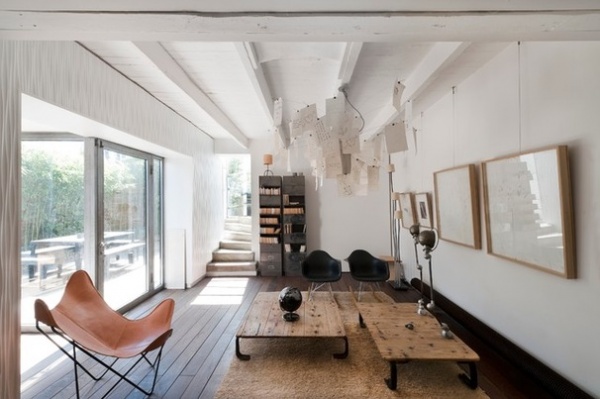
Reality: There are elements of eclecticism. Another key to French style is eclecticism. Because our land and architecture reflect millenniums of evolving civilizations, there is no such thing as a uniform French identity. We all are the result of a mixed and complex history, and this translates into the way we decorate our homes. We shamelessly mix eras and styles, lines and materials, but often a restricted color palette helps tie everything together.
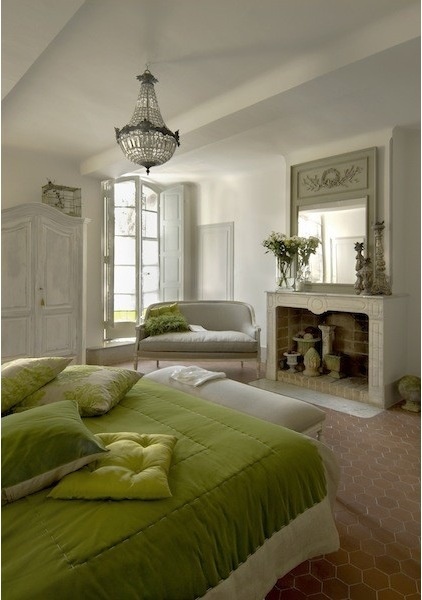
Myth 5: Provincial style is everywhere, including Paris.
No, you haven’t been entirely lied to — the Provincial look does exist in France. Province refers to anywhere in France except Paris, including countryside villages, small towns and major cities. As noted before, France is, by traditions and geography, a diverse country, which means the Provincial style differs greatly from one place to another.
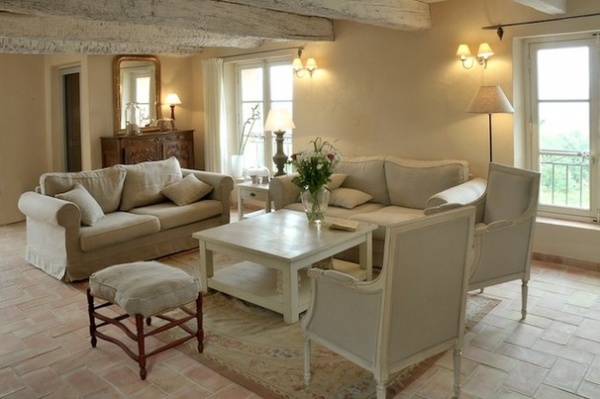
Provincial style usually involves whitewashed furniture and structural wood, wrought iron details, limestone or light-colored lime-rendered walls, and terra-cotta or sandstone floors. It’s a little bit rustic yet chic, but it does need strong architectural elements to shine. It might look a bit bland in a “generic” suburban home. While many French people do like such style, they often use it as a way to add accent pieces in a more contemporary setting. They might embrace the style a bit more in older, rustic homes, but the total look is often created for tourists, in vacation homes and in bed and breakfasts.
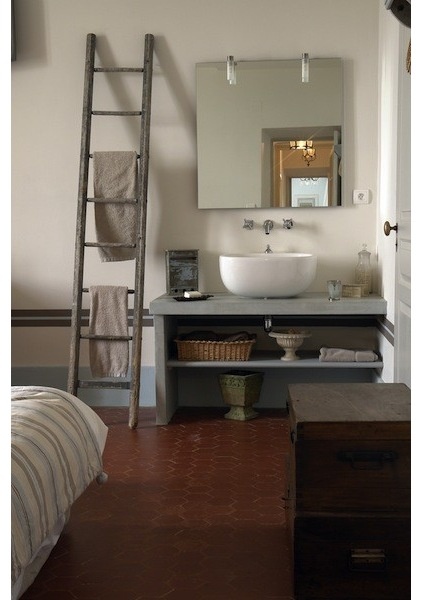
Reality: We love rusticity, not clichés. Generally speaking, French people hate clichés with a passion, and having an interior entirely fitted out in the same style without any surprising quirks or an interesting mix would be judged predictable and boring at best and tacky at worst.
While the French love some of the “honest” materials used in French Provincial style, such as linen, wood, wrought iron and stone, we tend to use it in a more contemporary interpretation than what you might expect. The room seen here describes this quite well: The clean, fuss-free lines of the vanity and the contemporary basin, mirror and faucets bring a modern edge to an otherwise more traditional home, with soaring ceilings, antique terra-cotta floor, rustic ladder and ticking bedding.
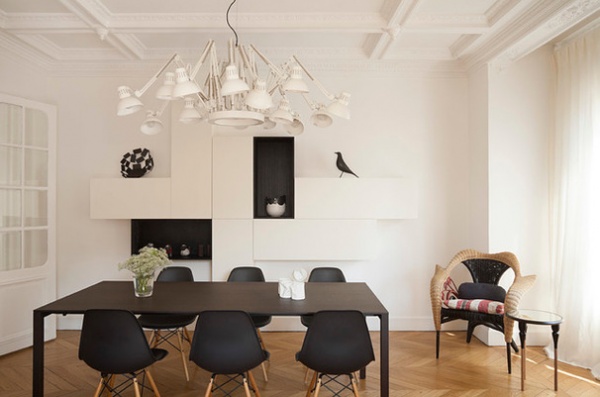
Tell us: What aspects of the architecture and interiors in France strike you as “so French”? Share your thoughts in the Comments.
More
So Your Style Is: French Country
Is Belgian Style the New Shabby Chic?












